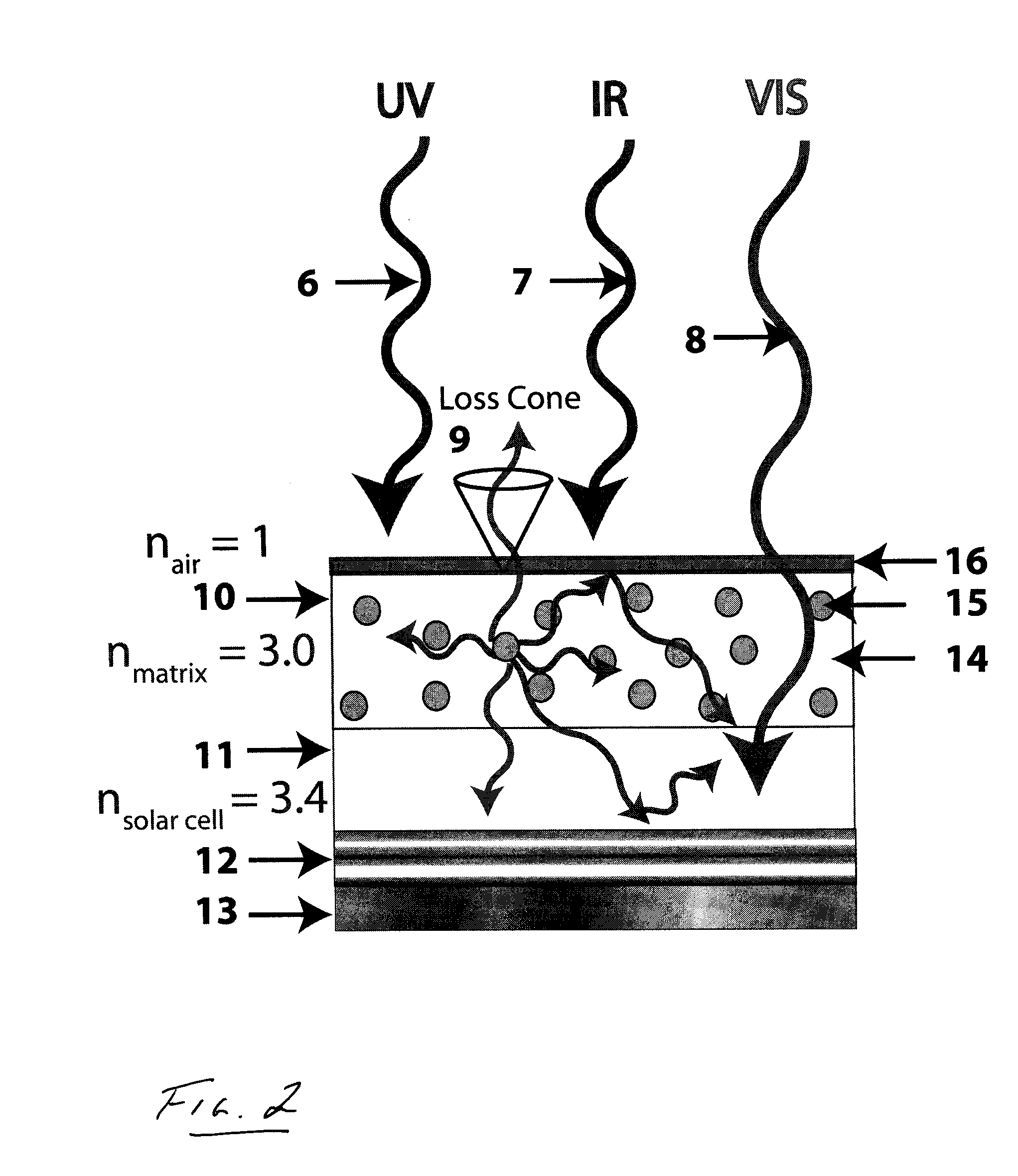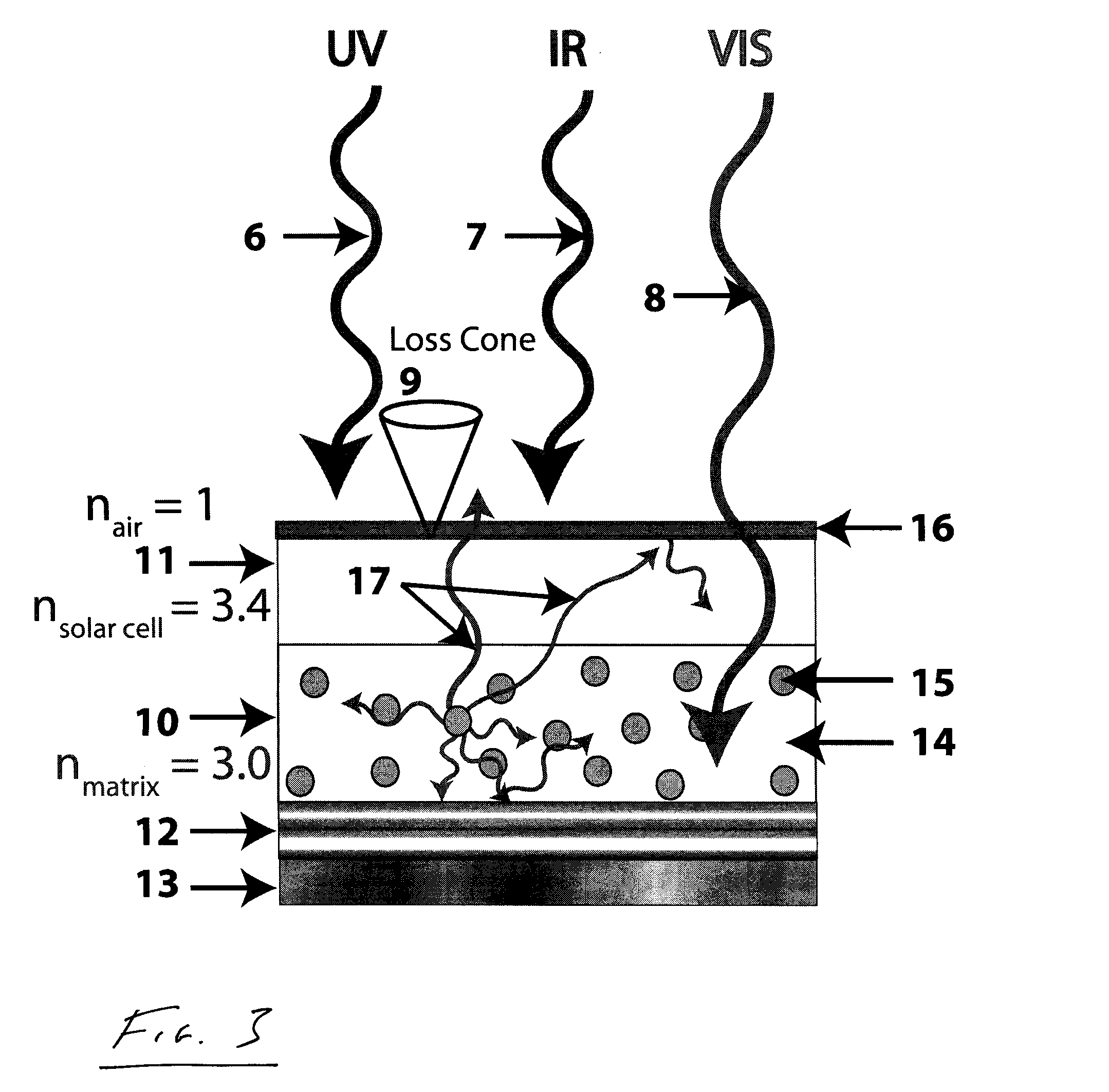Solar cell
a solar cell and solar energy technology, applied in the field of solar cells, can solve the problems of inability to electrons and holes cannot contribute to power generation, and all photons less than the band gap of the semiconductor used to make the absorber of a solar cell are not capable of contributing to the power generation. , to achieve the effect of increasing the path length of ligh
- Summary
- Abstract
- Description
- Claims
- Application Information
AI Technical Summary
Benefits of technology
Problems solved by technology
Method used
Image
Examples
Embodiment Construction
[0022]The following detailed description of preferred embodiments of the invention is provided with reference to the accompanying drawings. In describing the invention, explanation about related functions or constructions known in the art are omitted for the sake of clearness in understanding the concept of the invention, to avoid obscuring the invention with unnecessary detail.
[0023]The present invention exploits specific material properties to change the wavelength of light through an interaction involving the vibration of atoms known as Raman scattering. Raman scattering in silicon and silicon particles is particularly large.
[0024]Raman scattering can both increase and decrease photon energy a portion of an incident photon beam will be up-converted in energy. In turn these up-converted photons are useable by the solar cell component.
[0025]As shown in FIG. 1, Raman scattering is characterized by the interaction of light with quantized atomic vibrations within a material known as p...
PUM
 Login to View More
Login to View More Abstract
Description
Claims
Application Information
 Login to View More
Login to View More - R&D
- Intellectual Property
- Life Sciences
- Materials
- Tech Scout
- Unparalleled Data Quality
- Higher Quality Content
- 60% Fewer Hallucinations
Browse by: Latest US Patents, China's latest patents, Technical Efficacy Thesaurus, Application Domain, Technology Topic, Popular Technical Reports.
© 2025 PatSnap. All rights reserved.Legal|Privacy policy|Modern Slavery Act Transparency Statement|Sitemap|About US| Contact US: help@patsnap.com



